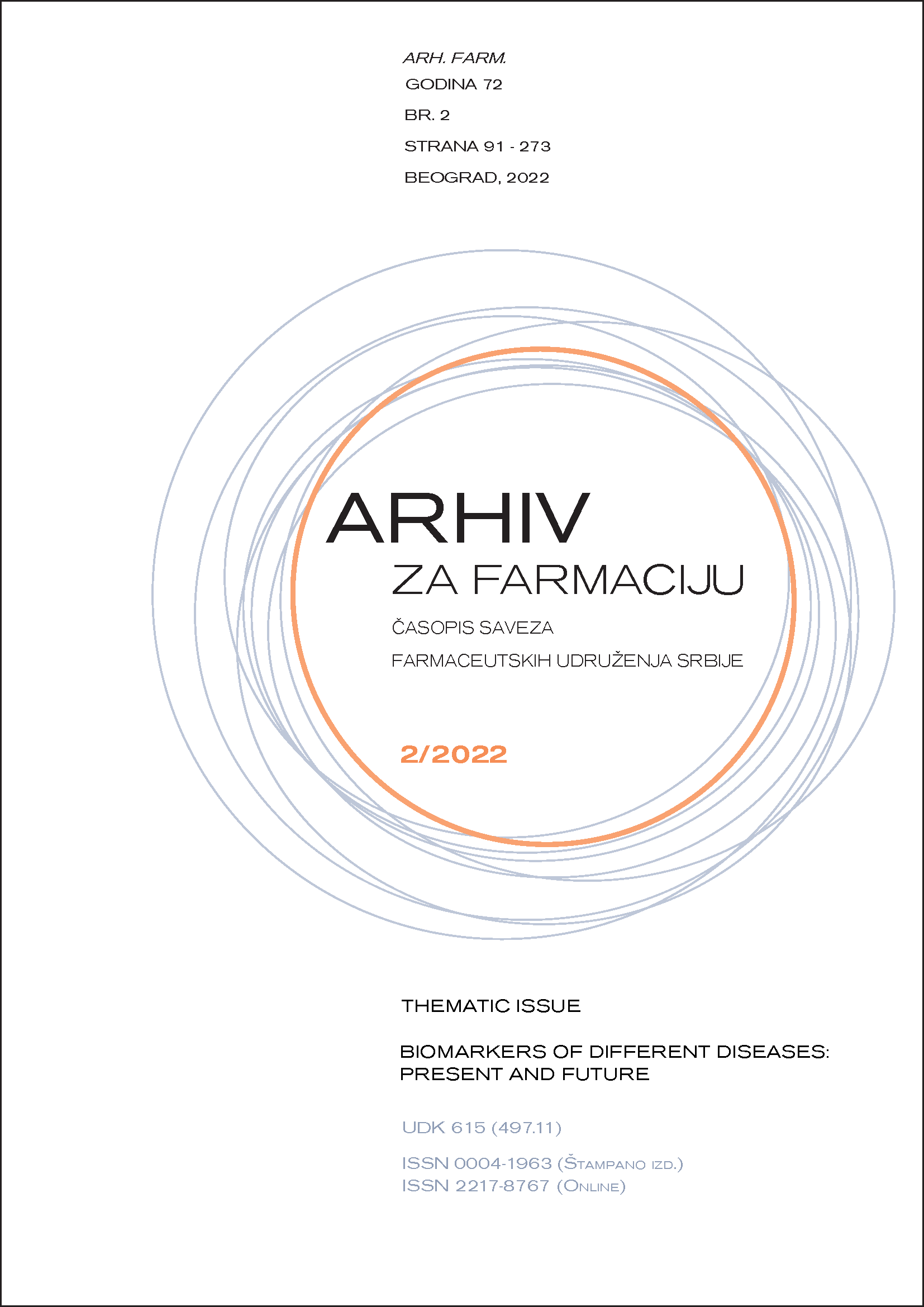
- A Word from the Guest Editor
Biomarkers – measurable biomolecules in body fluids – are used as indicators of health and disease. In clinical practice, determining their concentration serves to make a diagnosis, as well as monitor the effects of therapy, and thus the patient's condition. Biomarkers are the basic tools of evidence-based medicine, and their determination and monitoring enable effective treatment. Evidence-based laboratory medicine enables further development of the modern medicine ideal - personalized medicine. Based on the concentration of certain specific and sensitive biomarkers, clinicians make decisions that ensure the best clinical outcome for each patient. The contribution of biochemical laboratories (routine and research), i.e., biochemists working in the process of biomarker development, use and analysis, is crucial. Given that the development of biomarkers has accelerated in recent decades, with the aim of developing more precise, more accurate and more sensitive markers of diseases and therapy achievements, there is a large number of both research and new biomarkers that have already been introduced or will soon be introduced into clinical practice. The latest pandemic – COVID-19 – has made clear the need for rapid development of new biomarkers and raised the status of biochemical laboratories, as well as their ability to adapt to new needs and introduce new laboratory methods and techniques. On the other hand, it has also highlighted the importance of routine parameters that are part of standard laboratory practice. Therefore, I considered it important to provide an overview of current events in the world of biomarkers after a certain number of years. In front of you are 12 papers from several fields of medicine: endocrinology, lipidology, coronary heart disease, diabetes, vitamin D metabolism, aging, multiple sclerosis, obesity, and COVID-19.
The review of Antonić T. et al. describes the advantages and disadvantages of various laboratory tests used to diagnose autonomic cortisol secretion in patients with adrenal incidentalomas. The original work of A. Zeljković et al. dealt with the topic of the blood concentration of two forms of vitamin D (25 (OH) D and 24.25 (OH) 2D, as well as their relationship) in healthy individuals and their relationship with lipid status. In their review paper dedicated to dyslipidemia in diabetes, Vujčić S. and colleagues discussed the importance of determining the standard lipid profile, as well as new lipid biomarkers in risk assessment for the development of one of the most serious complications of diabetes, diabetic foot. Klisić and associates presented a topic related to several routine hematological biomarkers and their indices, which have recently been the focus of a large number of research groups, due to their predictive potential in patients with type 2 diabetes mellitus. In their review article, Leposavić G. and Stojić-Vukanić Z. discussed the topic of chronic inflammation as characteristic of the aging process and problems related to finding and introducing biomarkers of this condition in clinical practice. The review work of Michaličkova D. and associates reviewed several validated, clinically useful molecular biomarkers of multiple sclerosis, as well as several new markers that are still in the research phase. Guzonjić A. and colleagues considered leukocyte telomere length as a new biomarker of biological age and various diseases. In their review paper, Gjorgiyeva Ackova D. and co-workers analyzed the plant bioactive compound usage in the prevention and treatment of COVID-19. Perović-Blagojević I. and associates analyzed the role of routine biomarkers in diagnosis and disease course monitoring in adult and paediatric patients with COVID-19. Petković A. and co-authors gave an overview of non-coding RNA as potential biomarkers of coronary artery disease. In their original work, Vuković-Dejanović V. and associates presented an analysis of several new inflammatory biomarkers of cardiovascular diseases, and especially of the influence of statin therapy on these biomarker concentrations.
I cordially thank the Archives of Pharmacy Editorial Board for the opportunity provided to my colleagues, associates and me to express our views on the current status of the latest biomarkers of various common modern time diseases and provide a literature review of their biochemistry.
Guest Editor
Jelena Kotur-Stevuljević, PhD, Full Professor
University of Belgrade – Faculty of Pharmacy
Department of Medical Biochemistry
